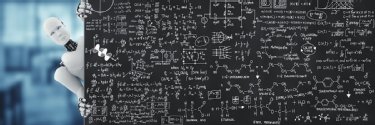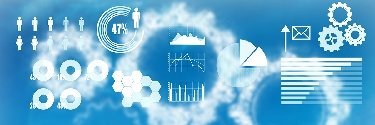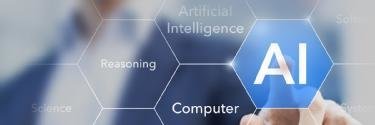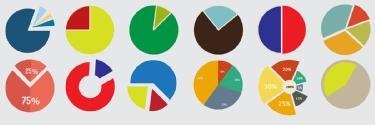Data integration
Most organizations draw data from multiple sources, including external ones. Data integration combines this data to create unified sets of information for tracking business performance and managing operations. Learn about data integration strategies to ensure information from multiple sources is consistent to meet users' data analysis needs across the organization.
Top Stories
-
News
10 Dec 2025

Couchbase adds agentic AI development suite to Capella DBaaS
AI Services, which includes an integration with Nvidia and governance capabilities -- among other features -- represents the vendor's growth beyond its database roots. Continue Reading
By- Eric Avidon, Senior News Writer
-
News
08 Dec 2025

IBM acquiring Confluent to boost AI development capabilities
The purchase of a streaming data platform complements the tech giant's existing tools by enabling developers to build agents using real-time information. Continue Reading
By- Eric Avidon, Senior News Writer
-
Feature
22 Jan 2021

Data fabrics help data lakes seek the truth
Data fabrics can play a key role in aligning business goals with the integration, governance, reliability and democratization of information collected in massive data lakes. Continue Reading
-
News
20 Jan 2021

Fivetran data connectors boost enterprise data integration
An enterprise data integration vendor is building out its suite of data connectors with updates for organizations to create data pipelines for business processes and analytics. Continue Reading
-
Definition
04 Jan 2021

What is feature engineering?
Feature engineering is the process that takes raw data and transforms it into features that can be used to create a predictive model using machine learning or statistical modeling, such as deep learning. Continue Reading
-
News
22 Dec 2020

Ascend aims to ease data ingestion with low-code approach
Data platform vendor Ascend has announced a new low-code approach to building out data pipelines on cloud data lakes to accelerate analysis and insights. Continue Reading
-
Feature
16 Dec 2020

Data anonymization best practices protect sensitive data
See how data anonymization best practices can help your organization protect sensitive data and those who could be at risk if that data identified them. Continue Reading
By -
Feature
10 Dec 2020

The top 6 use cases for a data fabric architecture
Enterprise data fabric adoption has been on the rise as a way to ensure access and data sharing in a distributed environment. Here are the top use cases for data fabrics. Continue Reading
-
News
10 Dec 2020

Varada accelerates data virtualization with Presto
The new Varada Data Platform combines data virtualization with the open source Presto SQL query engine to help enable rapid searches on cloud data lakes. Continue Reading
-
Definition
21 Nov 2020

Google BigQuery
Google BigQuery is a cloud-based big data analytics web service for processing very large read-only data sets. Continue Reading
By -
News
08 Oct 2020

Denodo Platform 8.0 expands data virtualization features
The updated platform from Denodo looks to help organizations via enhanced features that connect and query disparate sources of data across different environments. Continue Reading
-
Feature
28 Aug 2020

Investment in talent key for data quality in healthcare
Investing in training employees on proper data gathering and management practices is crucial for healthcare organizations seeking to ensuring data quality and patient care. Continue Reading
-
Feature
18 Aug 2020

Informatica CEO outlines digital transformation challenges
Informatica chief Amit Walia gives insight into what organizations need most to enable digital transformation and why enterprise data management is at the foundation. Continue Reading
-
News
08 Jul 2020

SODA Foundation launches to unify open source data management
A new Linux Foundation-sponsored group will support open source data management and promote interoperability between applications and data sources, on premises or cloud-based. Continue Reading
-
News
07 Jul 2020

Informatica expands enterprise data catalog capabilities
Informatica brought new features to its enterprise data catalog, including Data Asset Analytics, a tool to help organizations understand the value of their data. Continue Reading
-
News
30 Jun 2020

Fivetran raises $100M to advance enterprise data integration
The co-founder and CEO of Fivetran talks about what the vendor is doing to help organizations meet the challenges of enterprise data integration. Continue Reading
-
Tip
23 Jun 2020

Trusted data is among governance, data integration benefits
Well-conceived governance programs injected with data integration tools can overcome the inherent distrust companies have in their own data stored in multiple systems. Continue Reading
By- Andy Hayler, Information Difference
-
News
18 May 2020

Grafana 7.0 from Grafana Labs expands data visualization
Distributed tracing data joins log metrics in Grafana 7.0 release, providing users with more ways to connect, observe and visualize data coming from different services. Continue Reading
-
Feature
30 Apr 2020

How a logical data fabric can improve data management
As data continues to grow across different sources, speakers at the Fast Data Strategy virtual summit outline how a logical data fabric approach can help. Continue Reading
-
Tip
09 Apr 2020

Developing an enterprise data strategy: 10 steps to take
Consultants detail 10 to-do items for data management teams looking to create a data strategy to help their organization use data more effectively in business operations. Continue Reading
By- Craig Stedman, Industry Editor
-
News
17 Mar 2020

Hazelcast Jet 4.0 boosts event streaming data platform
The vendor's real-time event streaming platform gets a boost as the newest version adds support for Python machine learning models to help make sense of the data deluge. Continue Reading
-
News
09 Mar 2020

Matillion Data Loader goes GA: No-code tool addresses data ingestion
Matillion's new tool debuts a SaaS approach to help connect and load data from disparate sources without requiring organizations to conduct data transformations. Continue Reading
-
Feature
06 Mar 2020

Pros and cons of the 4 best IPaaS software options
Integrating with your cloud data? Choosing between IPaaS software and vendors can be difficult. Here is a breakdown of four of the top-choice vendor offerings on the market. Continue Reading
By -
News
03 Mar 2020

Talend Data Fabric Winter '20 update brings data inventory
Talend's Winter '20 Data Fabric milestone update integrates a new data inventory capability alongside enhanced data pipeline designer capabilities. Continue Reading
-
News
24 Feb 2020

Lessons learned from Credit Karma GraphQL architecture
Credit Karma's vice president of engineering explains why and how the personal finance service is using the GraphQL data query technology to support its growing business. Continue Reading
-
News
19 Feb 2020

Dell EMC Streaming Data Platform integrates open source technology
Dell combines several open source streaming data technologies, including Apache Kafka, Apache Flink and Pravega, to create a new streaming data platform. Continue Reading
-
News
13 Jan 2020

Boomi acquisition of Unifi Software nets data management
Dell Boomi expands its data integration software portfolio by acquiring Unifi Software, providing data preparation and data catalog capabilities. Continue Reading
-
Feature
31 Oct 2019

Data silos and culture lead to data transformation challenges
Data continues to grow at a rapid rate, and users are faced with increasing complexity and challenges to make sense of it all in a way that helps improve business outcomes. Continue Reading
-
News
24 Oct 2019

Splunk advances Data-to-Everything initiative
Splunk execs outline the vendor's direction and new capabilities at its annual user conference, including the general availability of Data Fabric Search and Data Stream Processor. Continue Reading
-
Feature
11 Oct 2019

Data integration vs. ETL in the age of big data
Data integration provides a consistent view of business performance across multiple data sources, though it needs to keep up with the changing needs of organizations and the big data revolution. Continue Reading
By- Andy Hayler, Information Difference
-
News
02 Oct 2019

Talend offers automated migration to cloud data warehouse
The new capability is supported by BladeBridge's converter technology and includes self-service tools for data preparation and data integration, among other features. Continue Reading
By -
News
19 Sep 2019

Dremio Data Lake Engine 4.0 accelerates query performance
Dremio issues a new platform update, defining itself as data lake engine technology that looks to help users connect and query data faster in AWS and Azure. Continue Reading
-
News
04 Sep 2019

Ascend releases Queryable Dataflows for building data pipelines
Ascend releases a technology preview of a capability that will enable data engineers to directly query dataflows, without the need for data to first be in a data warehouse. Continue Reading
-
News
29 Aug 2019

Align enterprise data architecture, governance for 'quick wins'
Data management consultant Donna Burbank outlines how effective data governance hinges on the deployment of a comprehensive enterprise data architecture. Continue Reading
By -
Guide
21 Aug 2019

GDPR, AI intensify privacy and data protection compliance demands
This guide covers the challenges data management teams face on data protection and privacy, particularly with the rise of GDPR and similar laws and the growing use of AI tools. Continue Reading
By- Craig Stedman, Industry Editor
-
News
21 Aug 2019

SnapLogic boosts its data integration technology with AI
SnapLogic's latest update for its Intelligent Integration Platform aims to make it easier for users to benefit from data integration. Continue Reading
-
Feature
20 Aug 2019

Enterprise data marketplace aims to ease self-service chaos
Self-service data preparation can duplicate work and slow down analytics. One possible fix: an internal marketplace where users can 'shop' for data assets. Continue Reading
By- Craig Stedman, Industry Editor
-
News
13 Aug 2019

Apollo data graph brings managed federation to enterprises
The new Apollo update is intended to enable organizations to federate multiple enterprise data sets more easily and use APIs to tap into disparate data sources. Continue Reading
-
News
30 Jul 2019

Hitachi Vantara updates Pentaho 8.3 to expand DataOps vision
Hitachi Vantara's new Pentaho update brings DataOps capabilities for data management to help organizations derive better data insights. Continue Reading
-
Feature
24 Jul 2019

Key components of an effective data virtualization architecture
Experts break down which elements -- both technical and nontechnical -- are most crucial to successfully deploying and managing a data virtualization architecture. Continue Reading
-
Feature
19 Jul 2019

11 real-time data streaming roadblocks and how to overcome them
Experts detail common challenges that IT teams encounter when deploying and managing real-time data streaming platforms and offer advice on how to address them. Continue Reading
-
Feature
27 Jun 2019

Explore data integration products for your organization
Browse through the current data integration products currently available to help you determine which tool best suits your organization's needs. Continue Reading
By- Mary E. Shacklett, Transworld Data
-
Feature
26 Jun 2019

How 4 organizations are breaking down data silos
Siloed data continues to inhibit enterprise efficiency. Here, IT professionals discuss problems their organizations are facing around data silos -- and how they're solving them. Continue Reading
By- Bill Marcus
-
Feature
19 Jun 2019

A comparison of open source, real-time data streaming platforms
With so many real-time data streaming tools, how do you know which is right for your organization? Experts compare Spark Streaming, Kafka Streams, Flink and others. Continue Reading
-
Tip
18 Jun 2019

Data virtualization benefits seen in unified views, IT agility
Through in-place integration, data virtualization platforms can provide wider access to data and simplify security and governance. But they come with some limitations. Continue Reading
-
Feature
14 Jun 2019

Data virtualization use cases cover more integration tasks
In a Q&A, Gartner analyst Mark Beyer discusses user adoption of data virtualization software and the wider data integration uses that the technology is now handling. Continue Reading
By- Craig Stedman, Industry Editor
-
News
05 Jun 2019

AtScale updates its data warehouse virtualization platform
AtScale 2019.1 comes with many new capabilities, including extended database support, increased security and advanced analytical query capabilities. Continue Reading
By- Sabrina Polin, Managing Editor
-
Feature
10 May 2019

Data virtualization layer feeds logical data warehouse, Agile BI
Indiana University is using data virtualization to combine data from various source systems for analysis, as part of an initiative to improve strategic decision-making. Continue Reading
By- Craig Stedman, Industry Editor
-
Feature
09 May 2019

Data modeling software tackles glut of new data sources
Data modeling platforms are starting to incorporate features to automate data-handling processes, but IT must still address entity resolution, data normalization and governance. Continue Reading
-
Feature
01 May 2019

Find the best data integration tools for your organization
Read analysis and comparisons of data integration tools to help you select the right platform from the leading commercial and open source products currently on the market. Continue Reading
By- Rick Sherman, Athena Solutions
-
Feature
30 Apr 2019

Data model design tips to help standardize business data
Data models should be understandable to business users and kept to a reasonable scope, say the leaders of a data modeling initiative at England's Environment Agency. Continue Reading
By- Craig Stedman, Industry Editor
-
Feature
29 Apr 2019

Wayfair charts open source components course to growth
Teams at Wayfair mix new open source tools to power customer-facing apps. In such shops, tech leaders like Ben Clark must deftly maneuver an obstacle course of data components. Continue Reading
By -
Feature
03 Apr 2019

Evaluate the features of data integration tools and software
Before you evaluate and select data integration tools and software, assess which must-have, should-have and nice-to-have features match your organization's needs. Continue Reading
By- Rick Sherman, Athena Solutions
-
Feature
02 Apr 2019

Data integration platforms take users beyond ETL software
Discover how commercial data integration platforms help organizations manage and simplify the process of combining and sharing their increasing volumes of data. Continue Reading
By- Rick Sherman, Athena Solutions
-
News
21 Mar 2019

Machine learning approaches gain critical mass for data pros
Machine learning will bring change to analytics and data management, said data luminary Michael Stonebraker. Others agree managing such change will take special effort. Continue Reading
By -
Feature
06 Mar 2019

Augmented data management draws more enterprise interest
With AI and machine learning, organizations are starting to augment their data management. This is changing the way enterprise users capture, govern and integrate data. Continue Reading
By -
Feature
27 Feb 2019

How to navigate the challenges of the data modeling process
Data modeling and curation can help businesses more efficiently use data they've collected. There are challenges, however -- beginning with ensuring data quality. Continue Reading
-
Feature
13 Feb 2019

5 best practices for managing real-time data integration
Real-time data integration isn't like traditional data integration -- "it's moving, it's dirty and it's temporal," cautions one data pro. Experts offer up some best practices. Continue Reading
-
News
11 Feb 2019

Web integration platform eases way to machine learning models
StoryFit data scientists employ machine learning algorithms to gauge film script scenarios' prospects. They use Import.io tools to make data preparation easier. Continue Reading
By -
Feature
29 Jan 2019

5 data management infrastructure technologies to evaluate
It's the start of a new year -- is your organization ready to face the data management challenges ahead? Here are five technologies to consider adopting. Continue Reading
By -
News
21 Jan 2019

Data.gov shutdown shows limits of open data
The Data.gov shutdown shows that, as open data can be turned off, data professionals may need to consider alternative sources for the kinds of data the government offers. Continue Reading
By -
News
28 Dec 2018

Data management trends for 2019: Governance, DataOps, cloud
Better data governance, increased cloud use and wider DataOps adoption head the list of trends for data management teams to plan for in 2019, IT analysts say. Continue Reading
By -
Feature
30 Nov 2018

Don't let blockchain complexity bog down business applications
Enterprise blockchain applications that run in a controlled environment don't require some of the components of cryptocurrency networks, explains expert David Teich. Continue Reading
-
News
06 Nov 2018

IBM-Red Hat deal highlights changes due in data processing
The IBM acquisition of Red Hat marks a watershed in computer architecture. The duo says it can rebuild data applications in new ways. This news analysis explores what's coming. Continue Reading
By -
Podcast
27 Sep 2018

Big data platform broadens place in analytics architecture
Big data platforms stumbled a bit getting out of the prototyping stage. But a view from the Strata Data Conference in New York sees broader use in the offing. Continue Reading
By -
Feature
26 Sep 2018

Mining equipment maker uses BI on Hadoop to dig for data
BI on Hadoop is still new, but moving BI to data is trending. A data scientist working with IoT data at Komatsu sees the importance of getting big data to the right people. Continue Reading
By -
News
16 Aug 2018

Chief data officer skills tested by AI tech blitz
A reporter's notebook from a recent MIT symposium provides insights on chief data officer needs, as the AI wave starts to hit CDOs and affects them more than most other tech trends. Continue Reading
By -
Tip
13 Jul 2018

How graph data modeling can help evaluate database tools
Mapping data to a graph model can be challenging, but these steps can help you create prototype applications -- which then can aid in evaluating graph databases. Continue Reading
By- David Loshin, Knowledge Integrity Inc.
-
Tip
27 Jun 2018

Three factors for protecting sensitive data in the GDPR era
Data privacy is a hot topic nowadays thanks to GDPR and the Facebook data scandal. But how do data security, access control and data protection differ? Continue Reading
By- David Loshin, Knowledge Integrity Inc.
-
Tip
18 Jun 2018

What goes into a customer analytics data integration framework
Customer data integration is a minefield for IT teams to navigate. But incorporating a set of core technical functions into an integration architecture can ease the process. Continue Reading
By- David Loshin, Knowledge Integrity Inc.
-
Tip
18 Jun 2018

Data integration techniques to help keep BI data consistent
Data integration processes that aren't managed properly can create inconsistent data in BI and analytics applications. Here are some steps to avoid that problem. Continue Reading
By- David Loshin, Knowledge Integrity Inc.
-
Feature
09 Apr 2018

Information architecture applied to big data streaming, AI
New technologies challenge data professionals, but taking a step back helps with hurdles. In this interview, consultant William McKnight takes a measured look at data streaming, GDPR and AI. Continue Reading
By -
Feature
06 Apr 2018

Cloud workloads, data lakes challenge information architecture
Data management options are expanding; cloud workloads are an example. That means changing your approach to information architecture, says data management expert William McKnight. Continue Reading
By -
Podcast
22 Feb 2018

Google TPUs open up on cloud; LinkedIn intros Hadoop Dynamometer
In big data news, we find Google TPUs, or Tensor Processing Units, offered as a cloud service, while LinkedIn is open sourcing a Hadoop test simulator called Dynamometer. Continue Reading
By -
Tip
13 Feb 2018

Data analytics architecture must break down higher ed silos
Siloed data isn't only a problem for businesses. It's also a big issue for many large universities -- one that their data infrastructures need to resolve for effective analytics. Continue Reading
-
Answer
21 Dec 2016

What are key features for choosing the best ETL tools for your needs?
Choosing the right ETL tool for your data integration requirements can be a challenge. Here's a rundown on what to look for in ETL software and potential vendors to consider. Continue Reading
By- Craig Stedman, Senior Executive Editor
-
Feature
29 Jun 2016

Inside the SAP Data Services data integration tool
SAP Data Services can be used alone or with other SAP products to provide data integration, transformation, data quality, data profiling and text data processing. Continue Reading
By- Rick Sherman, Athena Solutions
-
Feature
29 Jun 2016

An overview of the Pentaho Data Integration platform
The Pentaho Data Integration platform enables organizations to integrate, blend, convert and transform data from any data source across their entire enterprise. Continue Reading
By- Rick Sherman, Athena Solutions
-
Feature
03 Jun 2016

What you need to know about Oracle Data Integrator 12c
Oracle Data Integrator 12c works with several other Oracle products to leverage the capabilities of RDBMSs for processing and transforming data. Continue Reading
By- Rick Sherman, Athena Solutions
-
Tip
18 May 2015

Relational database design tips to boost performance
As relational database management systems handle more and more data, a strategic approach to data modeling has become vital. Continue Reading
By- Rick Sherman, Athena Solutions
-
01 May 2015

Key considerations for determining if a NoSQL DBMS meets your IT needs
A broad range of nouveau database systems can be helpful for organizations that need to crunch large volumes of unstructured, fast-moving data -- but there’s a lot to look out for. Continue Reading
-
News
21 Apr 2011

Disney discovers a whole new world of data warehouse best practices
The director of data warehousing and analytics at Walt Disney Parks and Resorts shares some important BI and data warehouse best practices. Continue Reading
-
Tutorial
06 Apr 2011

Structuring data integration models and data integration architecture
Get tips on structuring data integration models and data integration architecture. Learn how to build a business case for data integration modeling and leverage process modeling. Continue Reading
By- Anthony David Giordano
-
Tutorial
06 Apr 2011

Using logical data models for data integration modeling
Learn about using logical data models for data integration modeling. Get an overview of using a target-based data integration design technique. Continue Reading
By- Anthony David Giordano
-
News
23 Mar 2011

Capacity planning for the data warehouse environment
Capacity planning is essential for all data warehouse environments. Data warehouses grow at high rates and must be managed to keep budgets under control. Continue Reading
By -
Answer
02 Aug 2010

What is the difference between data definition language (DDL) and SQL?
Learn the difference between a data definition language (DDL), also known as data descriptive language, and the Structured Query Language (SQL). Find examples of both DDL and SQL. Continue Reading
By- Mark Whitehorn, University of Dundee
-
Answer
01 Jun 2010

Steps for converting a logical data model into a physical data model
Learn how to convert a logical data model into a physical data model via data modeling best practices. Find out how DDL and your data modeling practices play a role in conversions. Continue Reading
-
Feature
26 Oct 2009

Advantages and disadvantages of XML shredding
Learn about the advantages and disadvantages of XML shredding and different shredding methods, plus find out when shredding is and isn't a good option for your company. Continue Reading
-
Feature
27 Jul 2009

An introduction to database transaction management
Find out the performance advantages of using one connection for multiple statements in this database tutorial. Get a definition of local vs. distributed transactions and learn how to manage database transactions. Continue Reading
-
Feature
11 Jun 2009

Similarities and differences between ROLAP, MOLAP and HOLAP
Find out the differences between ROLP, MOLAP and HOLAP and their advantages and disadvantages. Learn about data quality and the evolution of data warehouse applications. Continue Reading
-
Feature
20 May 2009

Data modeling for the business: What is a data model?
Learn about high-level data modeling, what a data model is and how business and IT can use logical data modeling to plan a data design with these best practices from a data modeling handbook and guide. Continue Reading
-
Answer
14 Oct 2008

What are the components of service-oriented architecture (SOA)?
What are the components that make up service-oriented SOA? Find out in this expert response. Continue Reading
By -
Answer
21 May 2008

Enterprise versus project level conceptual data modeling
Learn the differences between enterprise level and project level conceptual data modeling, and find out how both approaches are compatible. Continue Reading
-
Answer
22 Apr 2008

Data model conversion: Conceptual design to logical design using an ER model
Learn two common approaches to converting a data model from a conceptual design to a logical design. Continue Reading
-
Answer
28 Nov 2007

The ETL process and MySQL
Get advice on the ETL process and ETL tools for transforming raw data in MySQL. Continue Reading
By- Mark Whitehorn, University of Dundee
-
Answer
23 Oct 2007

What are the benefits of a conceptual data model?
Learn the functions and potential benefits of a conceptual data model, from data modeling expert Pete Stiglich. Continue Reading
-
Feature
21 Jun 2007

Continuous integration: The value of CI
Learn about the value of continuous integration and get reasons why continuous integration can benefit the enterprise in this free sample chapter download. Continue Reading